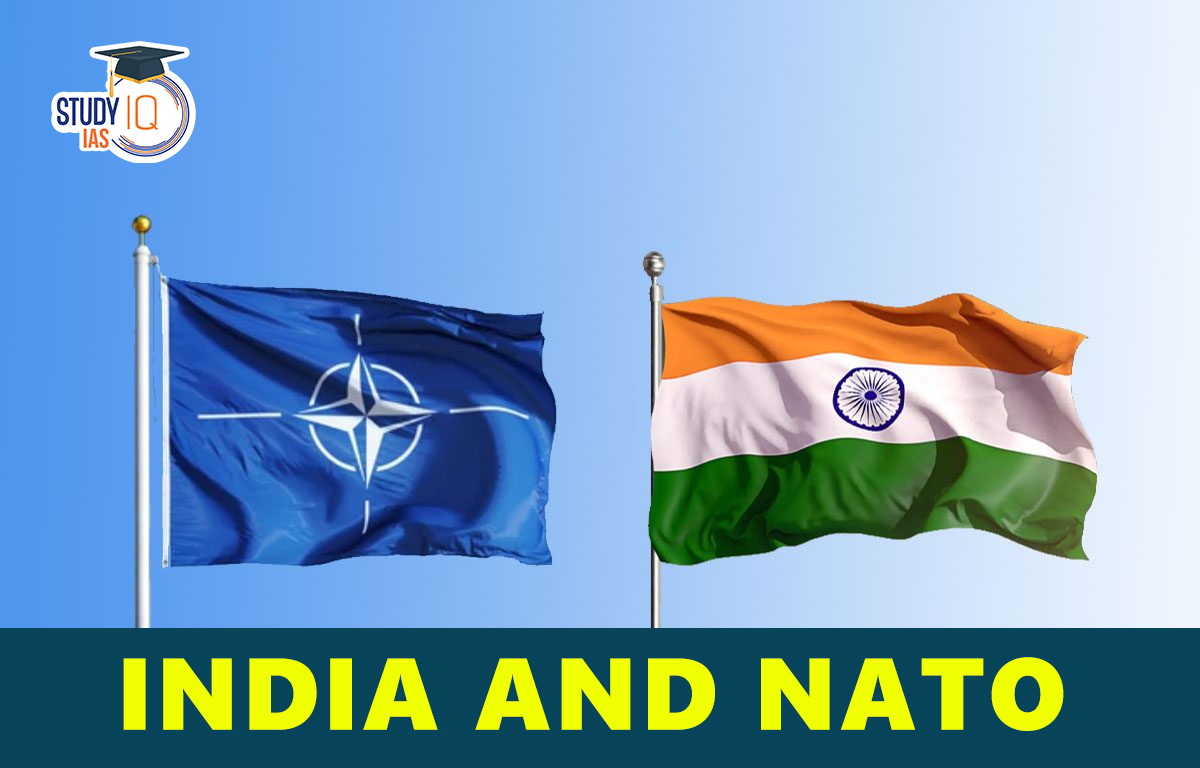Table of Contents
Context: The US ambassador to NATO has confirmed that there was an “informal exchange” regarding India-NATO cooperation with Indian counterparts on the side-lines of Raisina Dialogue and has stated that NATO is “open” to deepening ties with India.
About the North Atlantic Treaty Organization (NATO)
- Establishment: NATO was formed in 1949 with the aim of acting as a deterrent to the threat of Soviet expansion in Europe after World War II.
- Purpose: The organization acts as a collective security alliance with the aim of providing mutual defense through military and political means if a member state is threatened by an external country. (Article 5 of the NATO charter).
- Article 5 has been invoked once, by the United States, in the wake of the 9/11 attacks in 2001.
- Founders: Its 12 founding members are the United States, the United Kingdom, Belgium, Canada, Denmark, France, Iceland, Italy, Luxembourg, the Netherlands, Norway and Portugal.
- Story of NATO Expansion:
- The Soviet Union responded to NATO by creating its own military alliance with seven other Eastern European communist states in 1955, dubbed the Warsaw Pact.
- But after the collapse of the Soviet Union in 1991, a number of former Warsaw Pact countries became NATO members. This includes Hungary, Poland, Bulgaria, Estonia, Latvia among others.
- The most recent additions were Montenegro in 2017 and North Macedonia in 2020, bringing the total number of NATO member states to 30.
- NATO’s Open-door policy (Article 10 of the charter) allows any European country that can enhance and contribute “to the security of the North Atlantic area” to join.
- Finland and Sweden are on the cusp of joining NATO.
- Major Non-NATO Ally Status: It is a designation given by the US government to close allies that have strategic working relationships with the US Armed Forces but are not members of the NATO.
- The US has designated 30 other countries including Japan, South Korea, Japan, Israel etc. as major non-NATO allies.
- The status confers a variety of military and financial advantages such as participation in defence research projects and counter-terrorism initiatives, buy depleted uranium ammunition etc. that otherwise are not obtainable by non-NATO countries.
India’s Engagement with NATO
- Ballistic Missile Defence (BMD): In September 2011, NATO invited India to be a partner in its BMD system. This was the first time that India was invited to participate in a NATO initiative.
- However, India did not accept the invitation and expressed concerns over its impact on India’s strategic autonomy and its relations with other countries, particularly Russia.
- First political dialogue: New Delhi held its first political dialogue with the North Atlantic Treaty Organisation (NATO) in Brussels on December 12, 2019. Significance of this dialogue includes:
- Strengthening diplomatic ties: The talks signify India’s efforts to strengthen its diplomatic ties with NATO, which is a crucial security alliance in the Euro-Atlantic region.
- Countering China and Pakistan: The talks hold significance given that NATO has been engaging both China and Pakistan in bilateral dialogue. India’s engagement with NATO can help counterbalance China and Pakistan’s influence in the alliance.
- Balance in NATO’s perception: Engaging NATO in a political dialogue would provide India with an opportunity to bring about a balance in NATO’s perceptions about the situation in regions and issues of concern to India.
Perspective on Extending NATO’s Membership to India
| Arguments favouring India-NATO alliance | Arguments against India-NATO alliance |
| Convergence on many issues: There was a convergence in the perspectives of both India and NATO on China, terrorism, and Afghanistan, including Pakistan’s role in Afghanistan.
Newer perspective of Non-Alignment: India’s refusal to join any military bloc at the time of freedom was based on non-alignment, but after the end of the cold war during 1989-91 the situation changed. NATO has also built partnerships with many neutral and non-aligned. Creation of Deterrence: NATO’s collective defence mechanism would create deterrence for China and Pakistan to attack India. Military-Strategic Benefits: India would derive military-strategic benefits from a partnership with the world’s most powerful alliance. |
Divergence on issues: India does not share a common ground with NATO on Russia and the Taliban. Also, NATO’s views on China are mixed.
Endangering Relations with Russia: By becoming a NATO member, India’s long-standing and strong ties with Russia may get deteriorated. Threat to Sovereignty: An alliance with NATO might ask for the establishment of NATO bases on India’s territory and it may even be considered an infringement of our sovereignty. Conflict within NATO: NATO members have often found divided on how to share the military burden. Further, NATO members have also been found to disagree on policies related to Russia, the Middle East, and China. |


 Serious Fraud Investigation Office (SFIO...
Serious Fraud Investigation Office (SFIO...
 Article 142 of Indian Constitution, Sign...
Article 142 of Indian Constitution, Sign...
 Pakistan-Occupied Kashmir (PoK): History...
Pakistan-Occupied Kashmir (PoK): History...





















